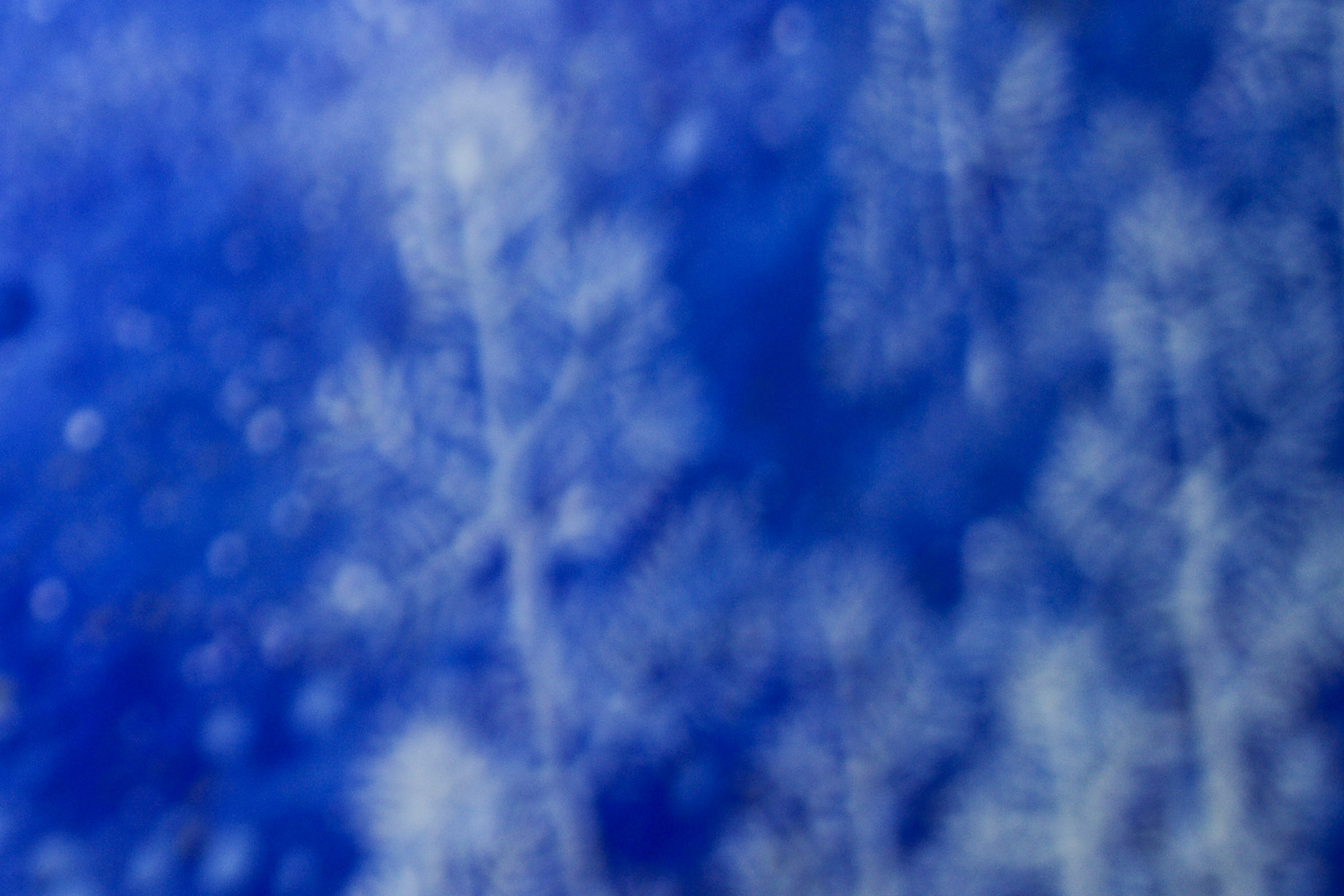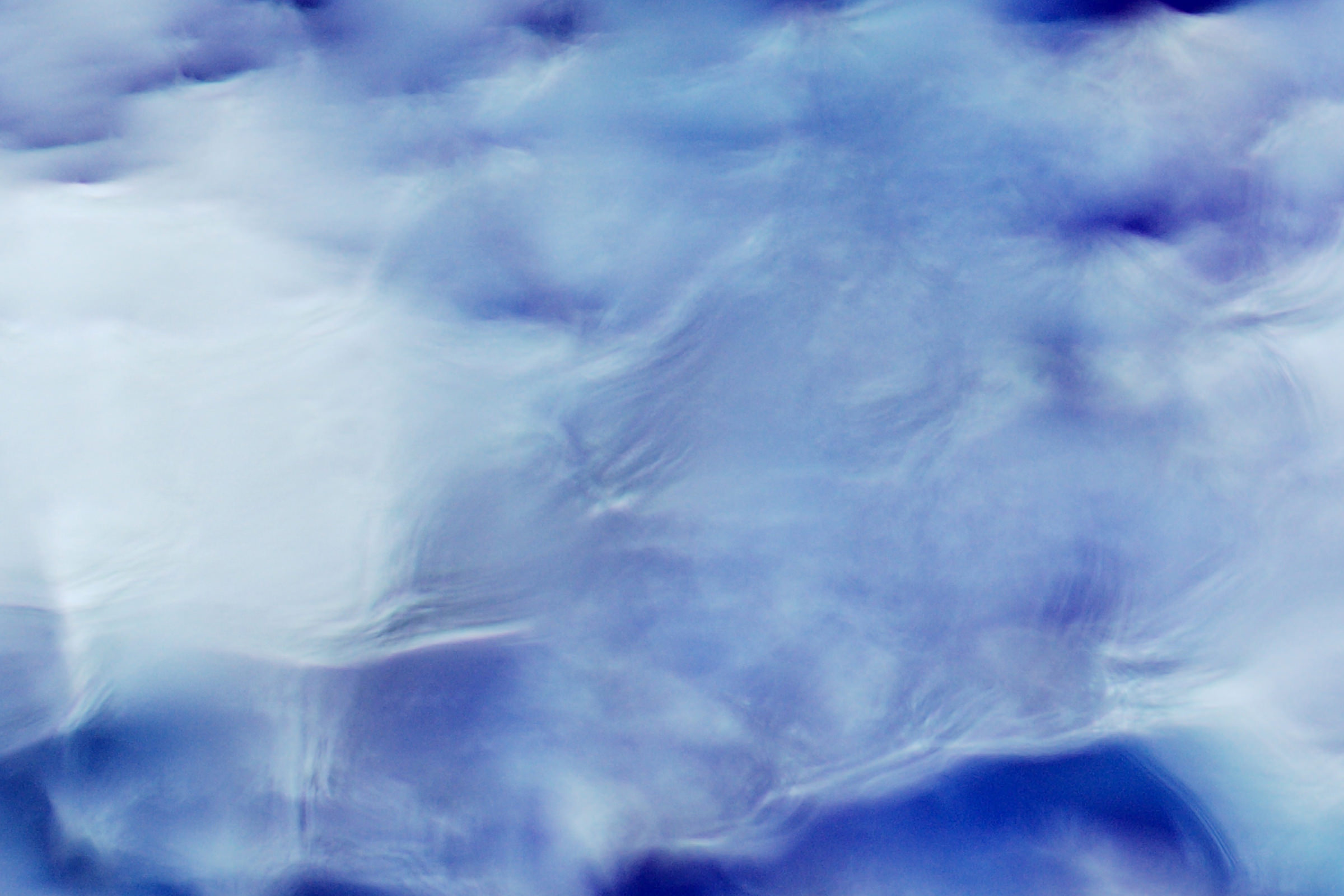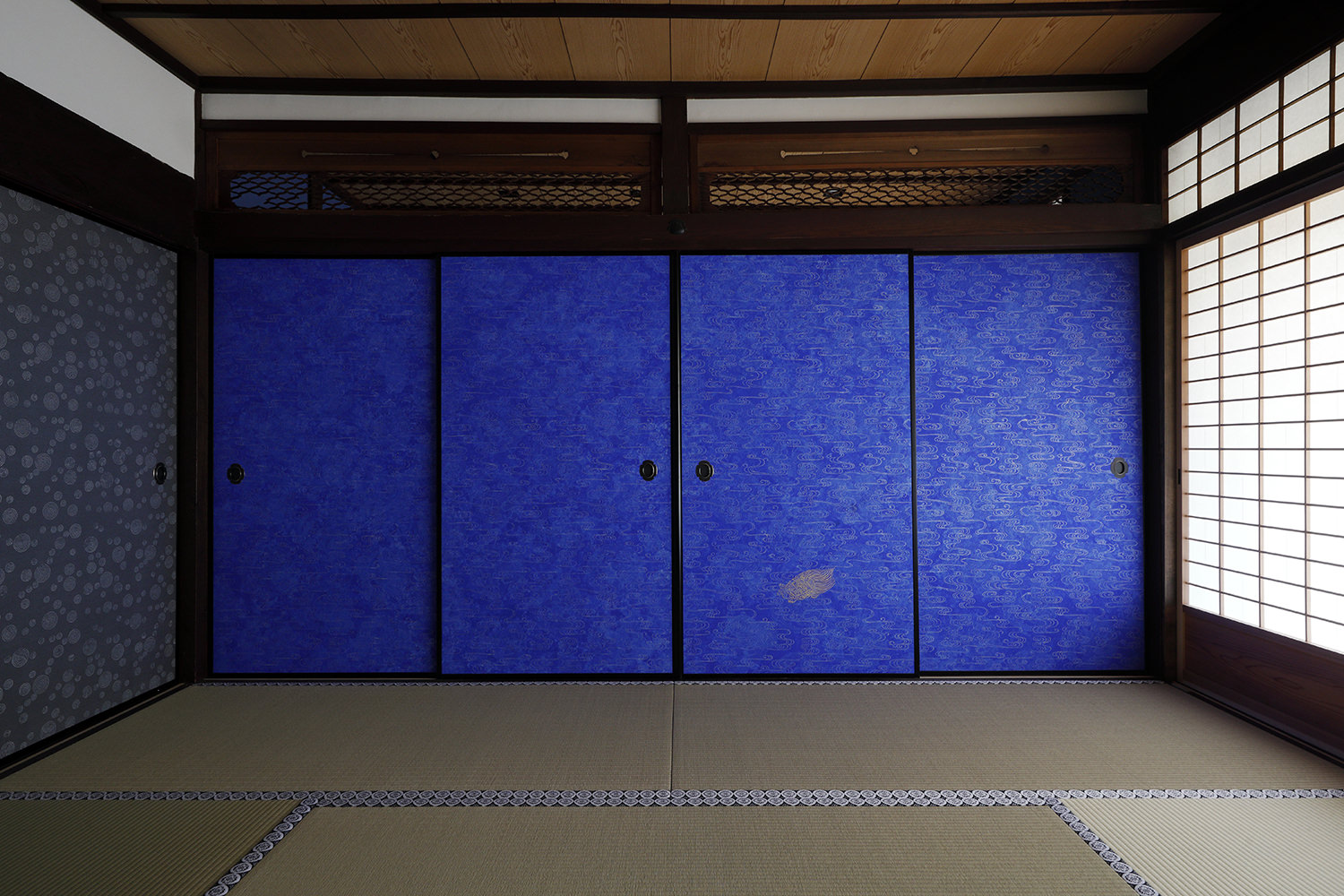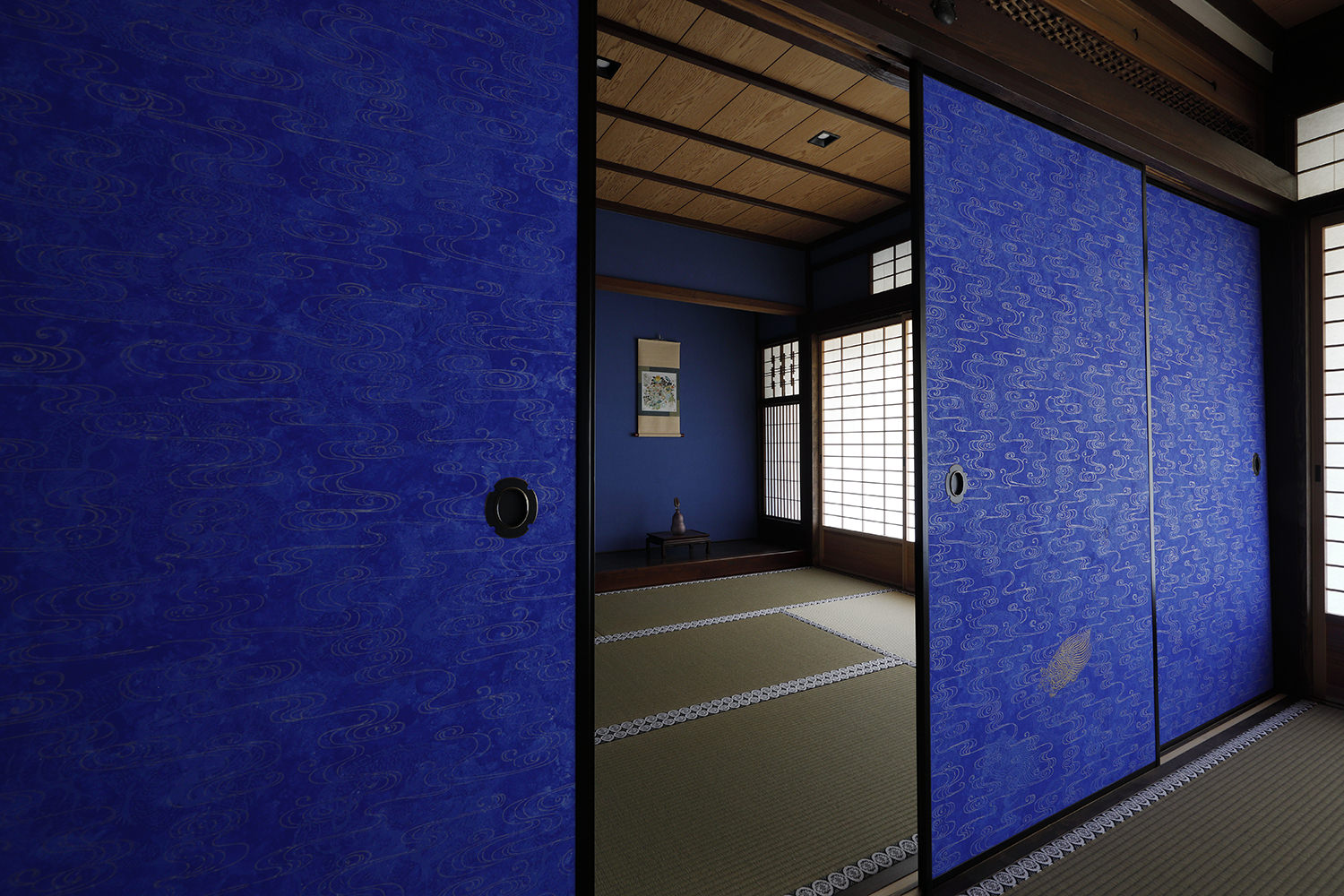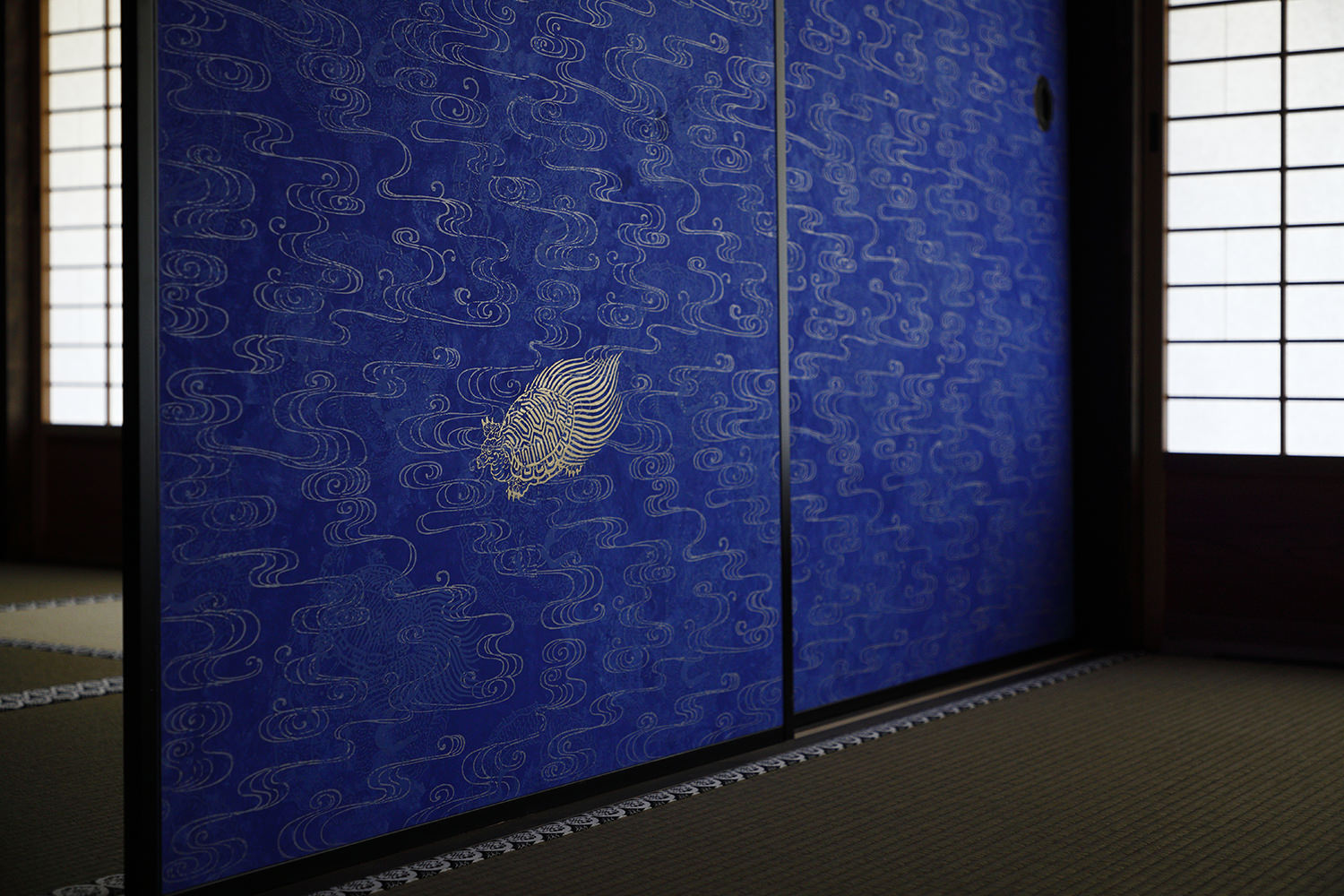Shifuku-printed lotus
It was a memorable job, as the beauty of the final karakami piece led to the renovation of an entire 300-year-old house.
One day, a young woman paid a visit to our atelier. She had inherited a 300-year-old samurai residence with sliding doors adorned with cloud-and-crane-patterned karakami. The same pattern had been handed down to us from our ancestors, enabling us to restore the doors with the same finish as before.
The mica-printed kumotsuru (cloud and crane) karakami was housed in a space with a spear rack, which speaks to the history of the house. Karakami resides there as in days gone by, perfectly at home in the dignified space.
Incidentally, this cloud-and-crane pattern, which had existed in the Matsukura family for several hundred years, was the same karakami pattern as the one used in the Honmaru Goten Palace of Nijo Castle. I took a reference photo when I visited the site with Kyoto City officials. It shows the sliding doors of the Honmaru Goten. Although the colors and textures are different because the photo was taken with a flashlight in the pitch dark while the building was closed for restoration, the karakami in Nijo Castle uses gold fold coloring applied to a foundation dyed greenish blue.
In addition to the restored karakami, other sliding doors were fitted with karakami using patterns selected in consultation with the young heiress, and Toto Blue karakami was also included in the project.
As a result, we were able to successfully combine old and new karakami in a powerful architectural structure with a rich history of 300 years, and this space, a fusion of traditional karakami and karakami that reveals the beauty of the current era, has emerged before our eyes as a fascinating world.
The young woman and I, who is in a position to continue the tradition and shepherd the present into the future, really hit it off, and we remain good friends to this day.
There is more to this project story.
After we delivered the karakami, the family was delighted, but the young woman’s mother decided that the surroundings did not match the dignity and beauty of the karakami. To everyone’s surprise, she decided to renovate first the room and then the entire building.
Later, under the esthetic ideals of the mother and daughter, the traditional yamato-mune (high walled structure) was repaired to be more earthquake-resistant and beautifully restored as architecture employing the authentic textures of Echizen wiped lacquer and traditional Kanazawa Gunsei (ultramarine) walls, along with our karakami.
Autumn 2018
Karakami Artist Toto Akihiko

